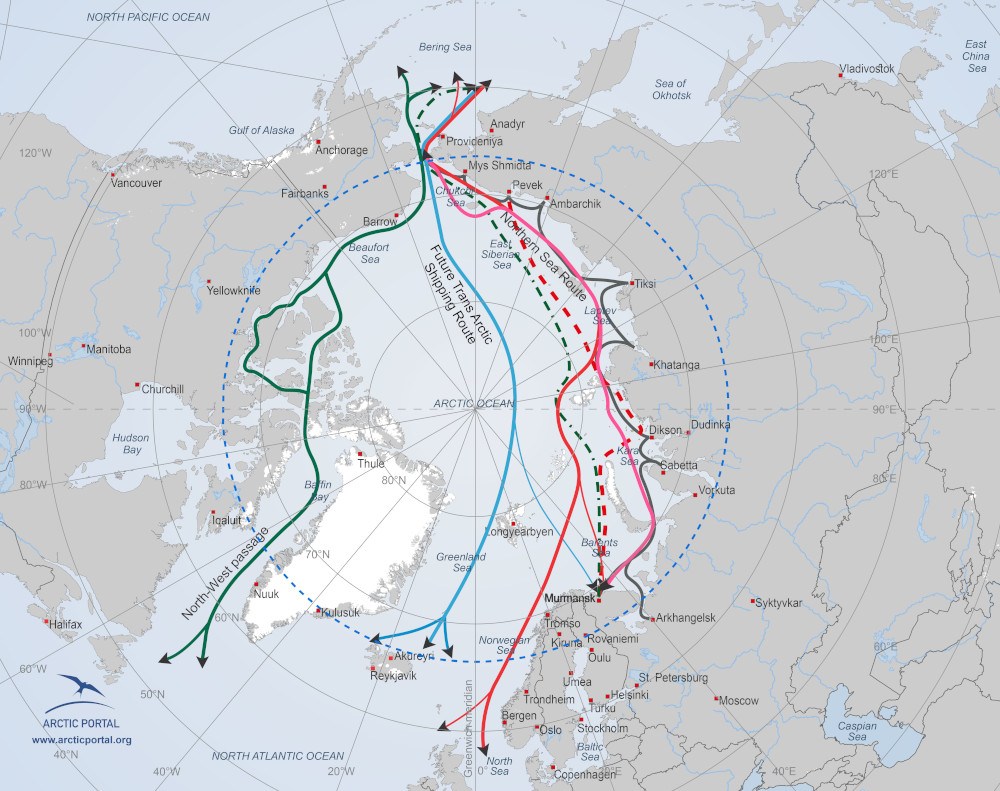The passage through the central Arctic Ocean depends on significant reduction of the ice thickness in that area.
Scientific research confirms that the multi-year ice cap covering the Central Arctic Ocean has changed dramatically over the past five decades, thinning significantly due to sustained warming. The Arctic is experiencing some of the fastest and most severe climate shifts on the planet.
A Navigable Central Route by 2025
By 2025, vessels with icebreaking capabilities have begun navigating through central Arctic waters during late summer—a development that was once projected to occur around 2020. This has become possible as the region’s sea ice continues to retreat, especially in the warmer months.
Climate projections suggest that average temperatures in the Arctic will rise between 3.6 to 6.2 degrees Fahrenheit (2 to 3.4°C) by 2050, with even sharper increases of 7.2 to 10.8 degrees Fahrenheit (4 to 6°C) expected during the winter. These warming trends are reshaping the region’s geography and navigational possibilities.
The Arctic Data Management System (ADMS) now shows potential seasonal shipping tracks across the Central Arctic Ocean. To view these, users can select "Arctic Shipping Routes" in the left-hand menu on the platform, which highlights emerging navigable paths that were inaccessible just a decade ago.
Benefits for Coastal Communities and Industry
The opening of these new Arctic shipping passages is expected to benefit northern coastal communities,resource-extraction operations, fisheries, and tourism industries. The reduced travel distance between Asia and North America may lower fuel and cargo costs, offering an alternative to traditional routes through the Panama Canal, Suez Canal, or the Strait of Malacca.
An increase in vessel traffic may also bring new infrastructure, economic activity, and global connectivity to Arctic communities, transforming them into strategic hubs for ice-class vessels and tourism.
Environmental and Regulatory Concerns
However, the growth of Arctic shipping raises serious environmental and regulatory concerns. Fragile ecosystems are at risk from increased noise pollution, oil spills, and black carbon emissions from ships. There is also a growing need for coordinated international governance, search-and-rescue capacity, and Indigenous community engagement to ensure sustainable and safe navigation in these remote and vulnerable waters.
Text source:National Snow & Ice Data Center, Chinare5Map: Arctic Portal (to view more maps please visit our Map Gallery)









